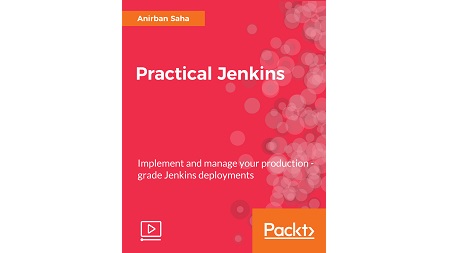
English | MP4 | AVC 1920×1080 | AAC 48KHz 2ch | 3h 40m | 945 MB
Automate your Jenkins deployment in no time!
Setting up Jenkins and running build jobs is not enough for a production infrastructure. For optimal performance and results, architecting, designing, and implementing a production-grade Jenkins deployment is essential.
This course gets you up and running with Jenkins and enables you to deliver an optimal Jenkins deployment. On your journey, you will explore and configure features such as high availability, security, monitoring, and backing up/restoring data, which are basically all of the things you need to implementing a scalable and production grade infrastructure. You will also learn how to implement distributed builds, automate build pipelines, and integrate your Jenkins deployment with external services, thus showing you how to increase your team’s productivity with pipeline as a code building advanced pipelines faster and easier.
By the end of this video course, you will be able to automate, implement, secure, and manage your Jenkins deployment in no time.
This video course will take a step-by-step approach to get you up-and-running with Jenkins and then quickly moves on to implement a scalable and production-grade infrastructure.
What You Will Learn
- Implement and manage your optimal Jenkins deployment
- Configure Jenkins along with essential dependencies with the use of manual and automated methods
- Use the Jenkins API to automate Jenkins-related functions
- Explore and configure distributed build workflows along with continuous deployment procedures
- Explore the use of containers to make builds and pipelines more dynamic
- Configure build pipelines using the declarative pipeline syntax along with multi-branch pipelines
- Integrate Jenkins with external services for builds, notifications, authentications, issues, and continuous delivery
Table of Contents
Installation and Configuration of Jenkins and Related Components
1 The Course Overview
2 Understanding Jenkins and Related Terminologies
3 Digging into Continuous Integration, Deployment, and Delivery
4 Setting Up Git, Code Repositories, and Dependencies for Jenkins
5 Installation of Jenkins from Packages and WAR Files
6 Configuring Reverse Proxy and Setting Up User Interface for Jenkins
7 Automating the Jenkins Installation and Configuration Process
8 Creating Build Jobs from User Interface and Scripts
High-availability, Monitoring, and Management of Jenkins Deployments
9 Setting Up Multiple Jenkins Masters with Load Balancer for High-availability
10 Backing Up and Restoring Jenkins Data
11 Monitoring Jenkins Components and Data
12 Implementing Security and Roles for Jenkins
13 Using the Jenkins API and Automating Plugin Management
Implementing Distributed Build Architectures and Code Deployments
14 Understanding Slaves, Agent Launch Methods, and Labels in Jenkins
15 Setting Up Jenkins Slaves to Run Build Jobs
16 Using Amazon EC2 Instances as Jenkins Slaves
17 Using Docker Containers as Jenkins Slaves
18 Running Containers as Jenkins Slaves on Kubernetes
19 Deploying Code from Jenkins Using AWS CodeDeploy
Understanding and Implementing Build Pipelines
20 Understanding Workflow of Jobs and Pipelines
21 Exploring the Jenkinsfile and Declarative Pipeline Syntax
22 Creating and Automating Build Pipelines
23 Understanding and Implementing Multi-branch Pipelines
24 Exploring Blue Ocean for Optimizing Pipeline User Experience
Integrating Jenkins with External Services
25 Integrating with GitHub
26 Integrating with SonarQube
27 Integrating with Artifactory
28 Integrating with JIRA
29 Integrating with Slack
Resolve the captcha to access the links!